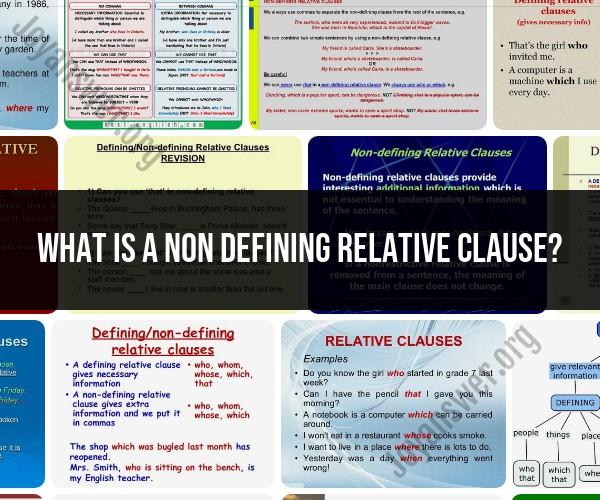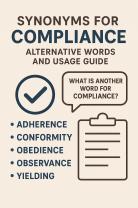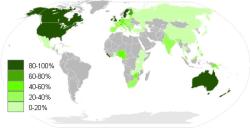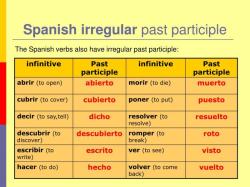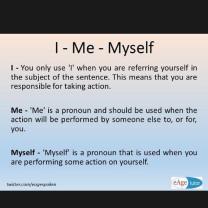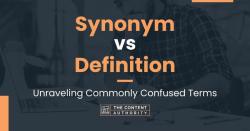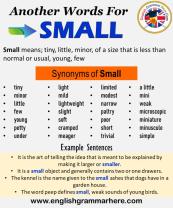What is a non defining relative clause?
A non-defining relative clause, also known as a non-restrictive relative clause or non-essential relative clause, is a type of subordinate clause used in English grammar to provide additional information about a noun or pronoun in a sentence. Unlike defining (restrictive) relative clauses, which are essential to the sentence's meaning and cannot be omitted without changing the intended meaning, non-defining relative clauses provide extra, non-essential information and are separated from the main sentence by commas.
Here's the structure of a non-defining relative clause:
- It begins with a relative pronoun (e.g., who, whom, which, whose) or a relative adverb (e.g., when, where, why).
- It provides additional information about a noun or pronoun mentioned earlier in the sentence.
- It is enclosed in commas to set it apart from the main sentence.
Examples of non-defining relative clauses:
My uncle, who lives in New York City, is a talented musician.
- In this example, "who lives in New York City" is a non-defining relative clause that provides extra information about "my uncle." It can be removed from the sentence, and the main meaning remains intact: "My uncle is a talented musician."
The Eiffel Tower, which was built in the late 19th century, is a famous Parisian landmark.
- Here, "which was built in the late 19th century" is a non-defining relative clause giving additional information about "The Eiffel Tower." Removing the clause does not change the essential meaning: "The Eiffel Tower is a famous Parisian landmark."
Non-defining relative clauses are common in written English and are used to add details or clarify information about a noun without restricting or defining it. They are often used in descriptive or informative writing to provide context or additional facts about a subject. Remember to use commas to set off non-defining relative clauses from the rest of the sentence.
